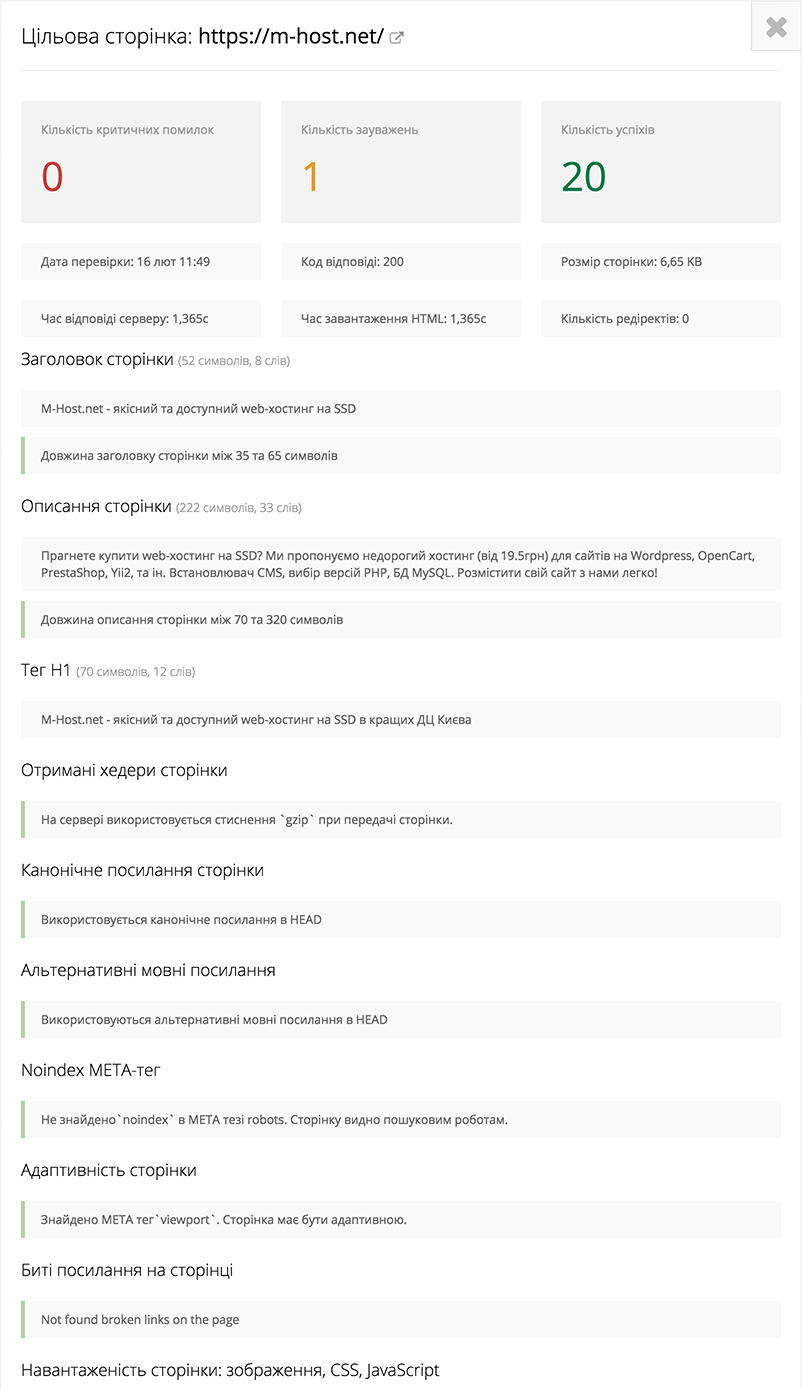- page size;
- page load time;
- status code (preferably "200 OK" without redirects);
- number of redirects;
- presence of a blank title TITLE;
- TITLE header length between 35 and 65 characters;
- the presence of a blank page description;
- the length of the page description between 70 and 320 symbols;
- the presence of a non-negative tag H1;
- Presence of compression when transmitting a page by a server;
- canonical link in HEAD;
- alternative language links in HEAD;
- the absence of `noindex` in the META-tag robot;
- availability of META-tag `viewport` for adaptability;
- broken links (with status codes not 200, 301, 302);
- total size of included files;
- number of files included;
- total weight of included javascript files;
- the presence of the `async` attribute in the included JS files;
- total weight of included CSS files;
- the presence of CSS inclusions with the `media` attribute;
- total weight of images per page;
- image without attribute `alt`;
- presence of `favicon`;
- Availability of Open Graph META-tags;
- availability of Twitter META tags;
- availability of links to social networks;
- page length (preferably from 2000 words, optimally - over 3500);
The rest of the same factors can not be measured directly on the page itself and depends often on a number of external factors. Correcting errors with the above factors will allow you to maximize the page in the issuance of the search engine. However, this does not guarantee a rise in the TOP-10, as this depends on a much larger number of factors (especially the total number of transitions by real users).

Users comments
Sorry you cant to leave a comment. Try to authorize yourself via login and password or use a one of social networks below: